Everybody wishes to have a clutter-free and organized email inbox.
It helps to find the correct email quickly and get the job done fluently.
But sadly, we receive a ton of unnecessary, distracting emails that take away our attention.
Some emails also do not need immediate attention or should be focused on later as they are complicated.
So to be efficient at work, you must know how to organize your Outlook Inbox.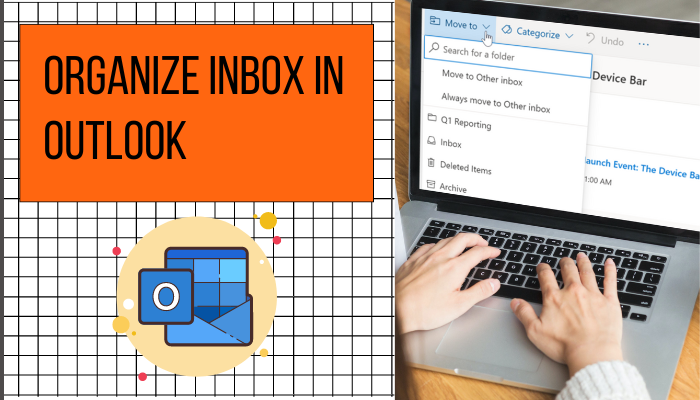
This post will guide you through the different methods to organize emails in Outlook. You will also learn some tips for managing your Inbox like a pro.
So keep reading the post till the end.
How To Organize Inbox In Outlook
Since you are using professional software like Microsoft Outlook to manage emails, you might be getting a lot of emails. Receiving and replying to emails might be a top priority for you.
So it is essential to organize the inbox so that you get a clean and clutter-free environment to work in.
It will boost your productivity and help you focus on the email’s work and contents instead of figuring out where to find stuff.
Using the following procedures, you can sort email messages in Outlook based on your needs. It will help you quickly find what you need from an extensive list of emails.
Follow the methods below to organize email messages in Outlook:
1. Use folders
Microsoft Outlook uses folders to divide all emails into different groups. Gmail, on the other hand, uses labels to group emails.
On the left, you will see folders inside the folder pane: Inbox, Junk Email, Drafts, Sent Items, Deleted Items, Archive, etc..
Since Outlook supports the folder structure like an operating system, you can create nested folders. For example, you can create folders labeled “to-do,” “follow up,” and “later” inside the Inbox folder and move inbox emails into these folders as appropriate.
Select the message and click on Move from the top to move messages into the appropriate folder. Choose the folder from the dropdown list. Alternatively, you can drag and drop the email into the appropriate folder in the folder pane on the left. 
You can also create new folders outside the Inbox folder to divide the emails into subcategories if the default folders are insufficient.
For example, you can create separate folders for messages that have high, medium and low priority. This way, you can start your day with the high-priority folder and gradually move toward the low-priority folder.
You can also create a separate folder based on working topics or projects.
Also, check out our separate post on Fix Outlook Could Not Create the Work File in 3 Minutes.
2. Archive messages
Archiving emails is an effective way to remove emails from the view but not delete them entirely. Contrary to deleting emails, archiving an email moves it into a separate Outlook Data File (.pst).
So in the future, should you need to see the email again, you can import the message from the archive data file (.pst). Also, you can search the archived messages.
Select one or more messages in Outlook to archive emails, then click on the Archive button at the top. 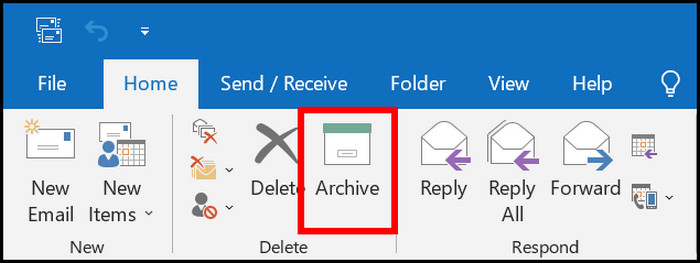
3. Use flags and filter
Using flags will help you to mark/tag messages for follow-up at a later date. If you have messages that you do not need to evaluate immediately but at a future date, then you should use flags.
By using flags, you are creating a reminder of the follow-up date. The reminder will help you to find what to follow up on, while you can use a filter to hide the messages by having a flag to focus on other messages.
The flagged messages also appear on the calendar, tasks list and to-do bar alongside the folder where the message is present.
Select the message and click on the Follow-Up option (with the flag icon) from the top to use flags. From the dropdown list, select the future date for following up. You can choose the presets like tomorrow, next week, etc. or select Custom for a different date. 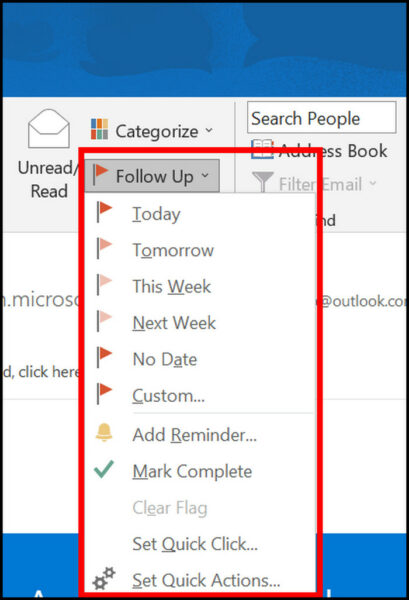
Alternatively, hover your mouse cursor over the message, and click on the flag icon.
To see the list of all messages you need to follow up on, go to Filter Email and filter by flagged.
When the follow-up is done, you can select the flagged message and click on the flag icon to mark it as complete.
Outlook also has the option to flag messages for the recipient to remind them about a follow-up on a future date.
Check out the easiest way to fix Outlook Can’t Create File Error When Opening Attachment.
4. Set up rules to organize emails automatically
Microsoft Outlook lets you create rules to automate the process of organizing emails. You can set up rules to move emails to specific folders or flag them based on particular conditions.
For example, you can set up a rule to move all messages received from a particular email address to a specific folder.
Using rules, you can also automatically move distracting emails (notifications, trivia, group activities, etc.) into a separate folder. It will keep you away from distractions.
Go to Rules > Create Rule from the top to create a new rule. Then you will get the option to make the rule as simple or complicated as you want. 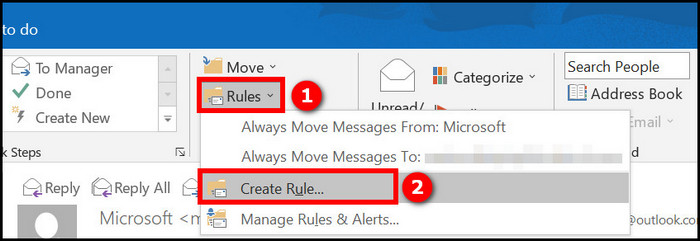
For example, you can specify how the rule will target the emails. You can target an email by the sender, specific text in the subject, etc. 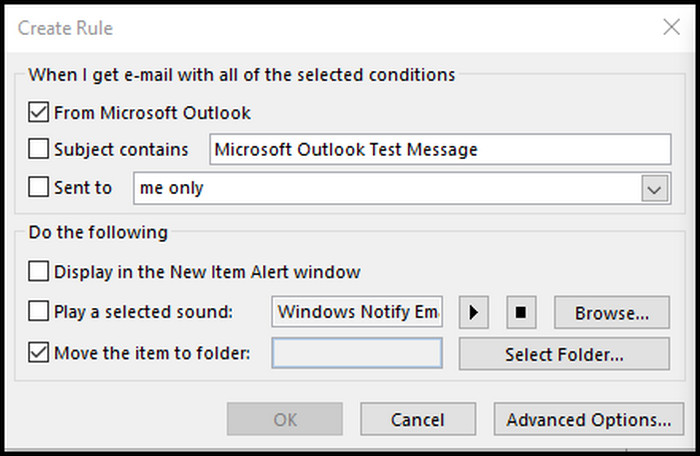
Next, you can specify what happens to the targeted email. You can choose to play a sound or move the email into a specific folder (for example, Deleted Items, Junk Emails, or any custom folder).
Also, check out our separate post on Outlook Fix This File Cannot Be Previewed.
5. Use the Clean Up feature
Microsoft Outlook has a handy Clean Up feature to arrange emails into conversation threads.
When you have a lot of messages back and forth with another email or group of emails, the Clean Up option will group the messages together into one conversation thread.
This way, you can declutter the Outlook inbox by grouping messages into conversation threads. It is especially useful if you quickly want to remove the clutter and organize the emails inside a folder.
To use the Clean Up option in your inbox, go to the Folder tab and click on the Clean Up option at the top. Then select Clean Up Folder from the dropdown list and confirm the action in the popout. 
Outlook will delete the duplicate emails inside the folder and group the emails into conversation threads, leaving you with fewer emails to sort through.
Related to our new guide post how to Open and Use a Shared Mailbox in Outlook.
6. Use categories
Along with using folders, you can use Categories to organize the messages inside a folder.
Categories will help you to visually mark the emails inside the Inbox or any other folder so that you can quickly find and focus on the correct emails.
You can choose the label and color for each category as you please. Categories in Microsoft Outlook work in the same way labels do in Gmail.
You can create categories based on urgency, projects, topics or deadlines. It is entirely up to you how you want to create categories and assign them to different emails inside a folder.
To create categories, enter any Outlook folder and click on Categorize. A dropdown menu will open where you can click on the All Categories to bring out the Category window. 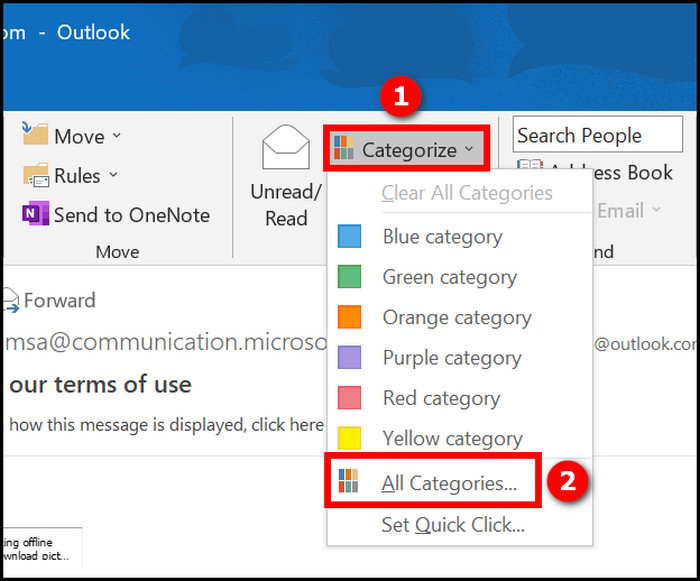
Then click on the New button to create a new category with a name and color. You also have the option to rename existing default categories. In the Categories window, select a category and click on the Rename button.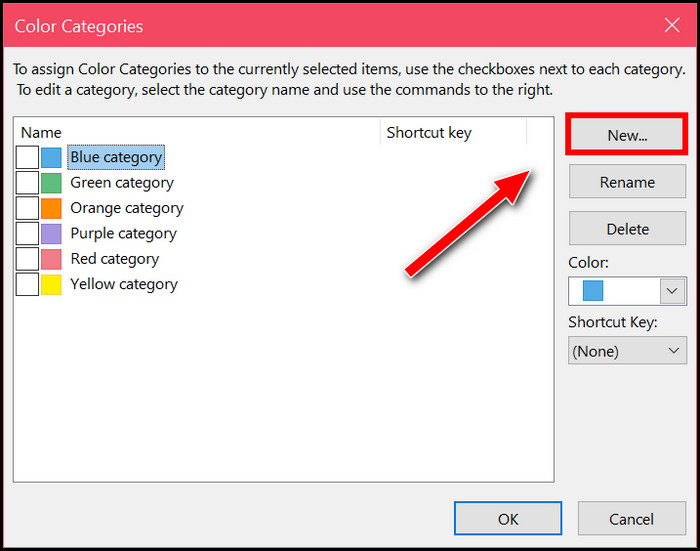
To assign a category to an email, right-click on the email and hover over the Categorize option to bring out the list of categories. Then select the appropriate category from the list. 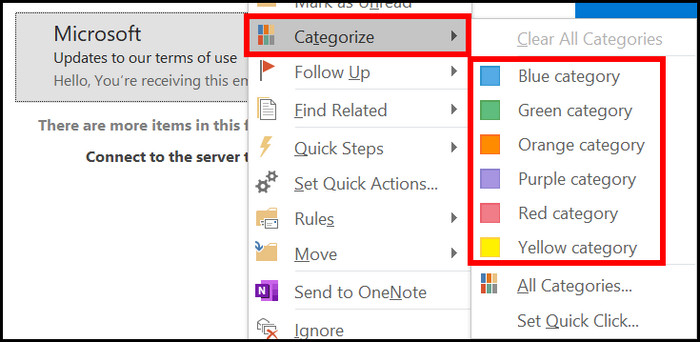
What Is The Best Way To Organize Outlook Inbox?
The best way to organize Outlook Inbox is to create folders inside the Inbox based on priorities and move the emails into those folders as needed. To further organize the emails, you can use Categories. So you will end up with folders which are the first step of organizing, followed by categories for more granular organizing.
Next, you can flag emails to create reminders and get a schedule from the emails.
Then you can set up rules to remove distracting messages. You can follow this step, along with archiving old messages, to reduce the clutter by a considerable margin.
If you are away from checking the Inbox for a long time (for example, on vacation), use the Clean Up tool to remove duplicate messages and group messages into threads.
Read the new post on how to fix Outlook Rules Not Running on Shared Mailbox.
Final Thoughts
Microsoft Outlook is an excellent software for dealing with emails. It has all the tools you need to read, send, receive, and organize emails.
Especially if you are working in an organization that deals with a lot of emails, Outlook is a great choice.
To make your workflow smooth and effortless, you can quickly organize the emails in Outlook Inbox to focus on the correct email.
There are different methods to organize emails in Outlook, and you can follow the various tips shared in the post.




